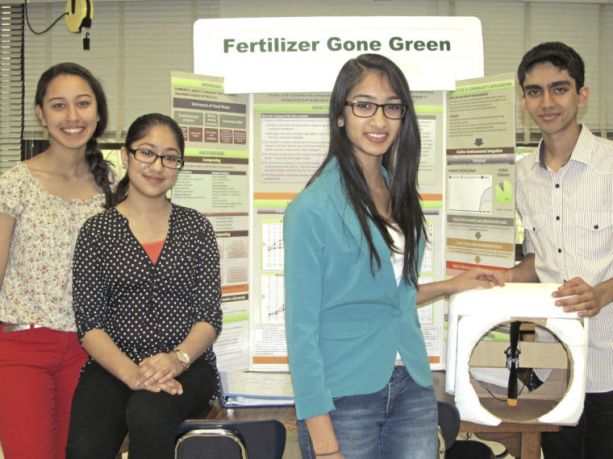Two teams of four Herricks High School sophomores have been recognized among 50 students around the country as finalists in the “Siemens We Can Change the World Challenge” in results announced late last month.
For the second straight year, The Siemens Foundation, Discovery Education, the National Teachers Association and the College Board challenged U.S. high schoolers to address environmental issues with practical applications related to energy, biodiversity, land management, water conservation, cleanup, air and climate.
The Herricks teams’ projects focused on creation of aerodynamic energy for automobile and composting as a natural fertilizing alternative with an emphasis on use of food waste.
Rikita Doshi and Abhihav Talwar devised a wind-driven device that could supplement energy in automobiles. It took the form of a four-propeller fan mounted in a styrofoam casing to be mounted on the roof of a car with wires connected to devices in the car.
“It would generate energy that way,” Talwar said. “We knew we wanted to work with energy.”
The team discovered a prototype for a patented wind-powered generator Ford Motor Company had considered but deemed it ineffective, the students said. But undeterred they pushed ahead.
“We actually found a design for a Ford like this. It didn’t efficiently generate so our product sought to improve on it,” Doshi said.
Their creation managed to generate nine volts – enough to charge a cell phone in a car – and there’s always the prospect of improving on the design.
Over four months of research and development, they prepared a brief Power Point presentation and a research paper.
Shivani Sheth and Shweta Lodha took a more down-to-earth approach of dealing with better ways to dispose of food waste through composting to create natural fertilizer.
“The point of our project was to make our own compost and compare it to store bought fertilizer,” Sheth said.
They created a three-panel display presenting the steps to follow in adding food wasted to other composting material to make it the end project more efficient. But their point was also to promote the general concept of composting to generate material for growing productive plants in gardens.
“We were also trying to advocate more effective ways to composting,” Lodha said.
They made presentations in their own science research class at Herricks High School and also to student clubs there. Apart from presenting the projects for the Siemens world challenge, they’ve also presented their project at the Malloy Science Fair and will present it again soon at the Nassau Community College Science Fair.
“The fact that so many people are hearing about this is promoting the first step to the global problem of conserving food and water,” Lodha said.
Like the aerodynamic project team, they also spent four months working on their project, including the research paper they prepared.
The students said they were all pleased with receiving the recognition for their work.
“I think it’s really great because we worked hard on this,” Doshi said.
Renee Barcia, science research teacher at Herricks High School who was the students’ faculty advisor on their projects, said this is the first year Herricks students have competed in the relatively new Siemens competition and she was pleased with their success.
“We’re very proud of the accomplishment Herricks students have achieved,” Barcia said.
The winning Herricks teams won a Siemens world challenge banner for the high school, and a Siemens We Can Change the World Challenge for each team member and with a finalist certificate.

